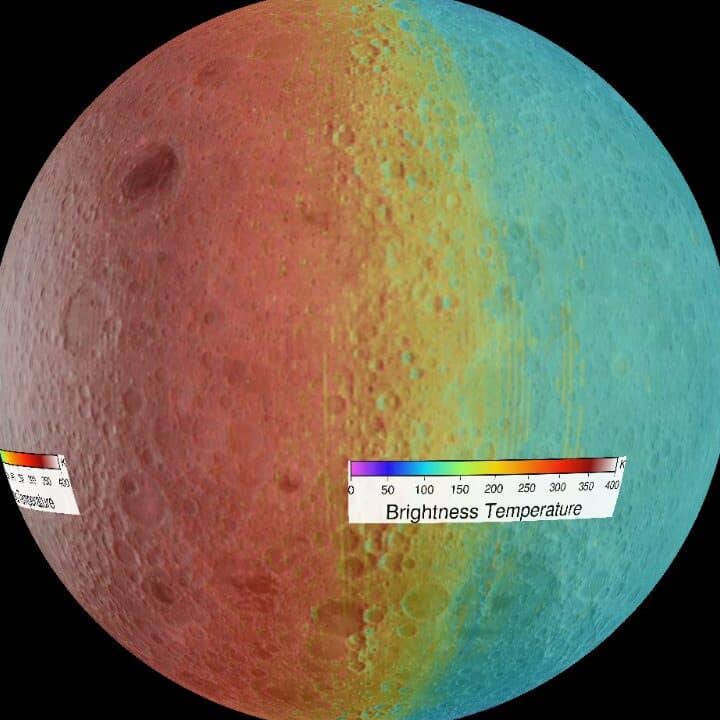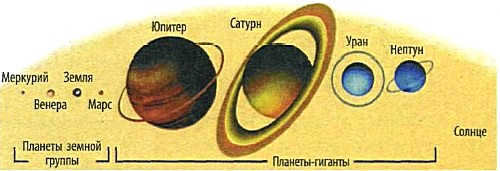
Fig. 7.2 illustrates the Earth’s orbit around the Sun, with an average speed of approximately 30 km/sec. Furthermore, the Earth undergoes rotation on its own axis, completing one revolution per day. The Earth is encompassed by an atmosphere that extends beyond 1000 km into space, providing favorable conditions for life to thrive on its surface, including suitable temperatures, atmospheric composition, and an abundance of water.
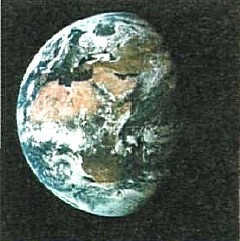
Figure 7.2. Image of the Earth taken from space
The composition of the atmosphere (Figure 7.3) is not uniform. Nitrogen N2 is the largest component of the atmosphere near the Earth’s surface, making up 78% of its volume. Nitrogen plays a crucial role in supporting plant life. Oxygen O2 is another important component, comprising 21% of the atmosphere’s volume. It is vital for the respiration of all living organisms on Earth. Water vapor H2O in the atmosphere acts as a greenhouse gas, trapping the Earth’s infrared radiation and leading to the greenhouse effect. This effect causes an increase in the Earth’s temperature. Without water vapor in the atmosphere, our planet would experience an ice age, with temperatures dropping as low as -25 °C even at the equator.
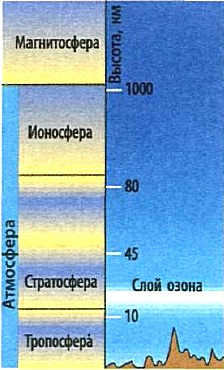
Fig. 7.3. The composition of the Earth’s atmosphere. The air is warmed by the Earth’s surface, resulting in a decrease in temperature with increasing altitude in the troposphere
Weather phenomena such as winds, cyclones, and anticyclones are formed in the lower layers of the atmosphere known as the troposphere, where heat transfer occurs through radiation and convection.
The Earth’s oceans and seas store a significant amount of solar energy due to water’s high specific heat capacity. As a result, there is usually little temperature difference on land during the day and throughout the year.
For those who are curious
If the oxygen content in the atmosphere exceeded one percent, there would be a continuous occurrence of fires as moist trees would ignite easily, resembling matchsticks. Conversely, if the oxygen content in the atmosphere dipped below 18 percent, it would become utterly impossible to ignite a match.
The ozone layer (consisting of O3, an alternative form of oxygen) serves as a protective shield safeguarding living organisms against the harmful ultraviolet radiation emitted by the Sun. This radiation has the potential to annihilate microorganisms, plants, and inflict ailments upon humans. In the absence of an ozone layer in the atmosphere, life as we know it would cease to exist on the Earth’s surface.
The magnetic field of the Earth generates radiation belts encircling our planet at altitudes exceeding 500 kilometers. Charged elementary particles traversing interplanetary space with high velocity interact with the Earth’s magnetic field, thereby preventing them from penetrating the atmosphere. Consequently, the magnetic field acts as a safeguard, shielding life on Earth from perilous cosmic particle streams.
The Earth’s ecological system is currently in a state of equilibrium, meaning that small disturbances in the atmosphere or variations in solar radiation do not have a significant impact on the overall condition of this system. However, geological research indicates that in the past, there have been ecological disasters that have resulted in drastic decreases in temperature and the onset of ice ages. In order to anticipate what lies ahead, it is crucial for us to understand the underlying causes behind such catastrophic events. A sudden decline in temperature on the Earth’s surface can be attributed to external factors, such as the impact of an asteroid (refer to § 11), geological phenomena like volcanic eruptions or tectonic plate movement, as well as human-induced influences.
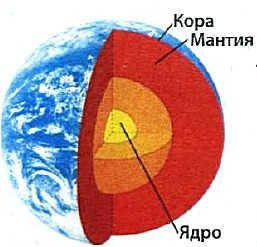
Figure 7.4. The Earth’s Internal Configuration
The Earth’s Composition. Geological research has revealed that the temperature within the Earth rises by 1 °C for every 34 meters and reaches +300 °C in boreholes at a depth of 10 kilometers. The Earth’s core, as depicted in Figure 7.4, consists of a metallic center. The outer section of the core is in a molten state at a temperature of 7000 °C, while the inner section is solid. Above the core lies the silicate layer, or mantle. The crust, which varies in thickness from 5-7 kilometers beneath the oceans to several tens of kilometers below the continents, “floats” on the mantle. As a result of convection in the mantle, the Earth’s crust has fragmented into separate plates that are gradually shifting (Figure 7.5).

Figure 7.5. The shifting of continents over time: a – Scientists theorize that 200 million years ago, there existed a supercontinent called Pangaea and a single global ocean; b – The movement of tectonic plates, caused by convection in the Earth’s mantle, resulted in the division of the Earth’s crust into separate plates, which are continuously moving
Even human activities caused by humans, which alter the chemical composition of the atmosphere, have the potential to create an environmental disaster. An example of this is the combustion of significant amounts of fossil fuels, which leads to a reduction in atmospheric oxygen and an increase in carbon dioxide, resulting in the creation of a greenhouse effect. Throughout the 20th century, the Earth’s average temperature rose by 0.8°C, resulting in the rapid melting of glaciers and the subsequent rise in sea levels. Consequently, vast areas of fertile lowlands were submerged due to flooding. To prevent an ecological catastrophe, humanity must embrace alternative sources of energy that do not harm the environment, such as geothermal energy, wind power, and solar energy (refer to section 12.7 for more information).
For those who are interested
The greenhouse effect is produced by the greenhouse film that is utilized to cover the bed, causing it to become unique. Throughout the daytime, the film allows sunlight to penetrate and warm the soil. In the event that the soil possesses a dark hue, it emits energy in the infrared portion of the spectrum in the opposite direction, and this energy becomes trapped by the film. In the atmosphere of our planet, the greenhouse effect is formed due to the presence of carbon dioxide and water vapor.
Our planet Earth has a natural satellite called the Moon, which lacks an atmosphere. The Moon’s appearance changes in what we call phases, and this is due to the fact that it reflects sunlight. As the Moon orbits around Earth, its position in relation to our planet and the Sun changes, allowing us to observe different parts of its daily hemisphere.
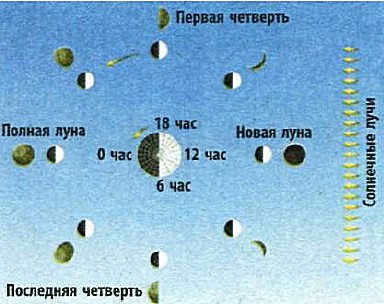
Figure 7.6. The different orientations of the Moon’s day and night hemispheres relative to the Earth cause the changing phases of the Moon.
To comprehend the reasons behind the Moon’s phases, let’s begin with the new Moon, which is rarely observable from the Earth’s surface because its night hemisphere faces us (Fig. 7.6). The new Moon can only be seen during solar eclipses, when the Moon’s dark disk becomes visible against the bright Sun (Fig. 7.7).
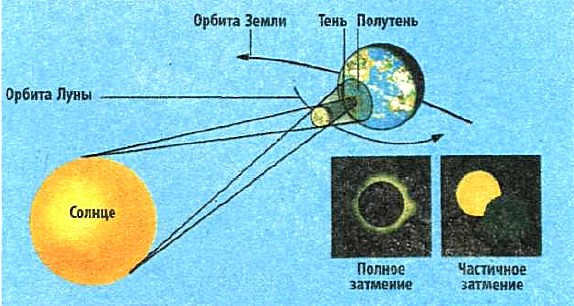
Fig. 7.7. Total solar eclipse
In a week’s time, the first quarter of the Moon takes place, where half of the Moon’s illuminated side and half of its dark side face towards Earth. The Full Moon, on the other hand, occurs when the Moon is positioned on the opposite side of the Sun. The last quarter, also known as the old Moon, can be observed in the southeastern part of the sky before dawn.
For those who are curious
One of the most captivating astronomical events that captures the attention of humans is the Sun’s eclipse, which happens when the Moon’s shadow reaches the surface of the Earth. While the Moon is positioned between the Sun and the Earth every 29.5 days (during the new moon phase), eclipses happen less frequently due to the Moon’s orbit being inclined to the ecliptic at a 5-degree angle. The lunar orbit has two points, known as the nodes, where it crosses the ecliptic plane. Eclipses of the Moon or the Sun can only occur when the Moon is near one of these lunar orbital nodes. As the lunar orbital nodes shift in outer space, eclipses happen at different times of the year. The recurrence period of eclipses, or saros, was discovered by Egyptian priests 4000 years ago. Modern calculations show that the saros cycle has a value of Tsar = 6585.33 days, which is equal to 18 years, 11 days, and 8 hours. In one saros cycle, there are 43 solar eclipses and 25-29 lunar eclipses in different locations on Earth’s surface. Additionally, solar and lunar eclipses always occur in pairs with a 2-week interval: if there is a solar eclipse in one lunar orbit node, then in another node, a lunar eclipse occurs after 2 weeks.
When looking at the Moon’s surface, even without any optical aids, it is possible to observe dark regions known as seas (Fig. 7.8), as well as lighter regions referred to as continents by astronomers.
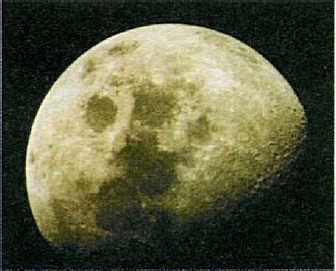
Figure 7.8. The lunar seas were created through volcanic activity billions of years ago. These seas have a darker hue due to a higher concentration of iron, while the lighter areas contain more aluminum.
The lunar seas do not contain any moisture, as water instantly boils and evaporates or freezes in a vacuum. However, water in a solid state may exist beneath the surface at depths of several tens of meters, where the temperature remains constant at -30°C.
When observed through a telescope, the light-colored continents on the Moon are primarily marked by craters – circular mountains that span several hundred kilometers in diameter and reach heights of several kilometers (Fig. 7.9).
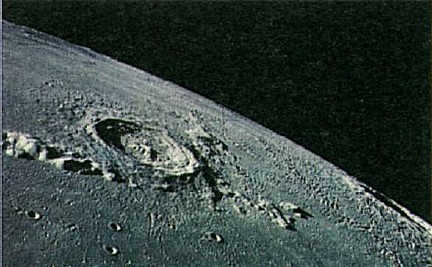
Figure 7.9. Meteorite impacts on the Moon formed most of the craters, although there were active volcanoes on the lunar surface 3 billion years ago
The majority of craters on the Moon are a result of meteorite impacts, although there are some that were caused by volcanic eruptions. During these eruptions, molten lava would flow out and fill lower areas, creating seas. However, volcanic activity on the Moon ceased a long time ago. The oldest solid rocks found on Earth’s continents are 4.4 billion years old, while the lava in the lunar seas solidified about 3 billion years ago.
For those who are curious
The Moon’s surface undergoes changes and erosion due to the impact of meteorites. When a meteorite, weighing 1 kg and traveling at a speed of 10 km/s, collides with the Moon, it releases enough kinetic energy to create a crater with a diameter of 1 m and scatter rocks and dust over a distance of several tens of meters. The Moon is constantly bombarded by thousands of meteorites of various sizes, which continuously alter its appearance. Some of the largest craters, measuring several hundred kilometers in diameter, were formed around 4 billion years ago during a period of intense meteorite activity. Over billions of years, this constant bombardment has pulverized the top layer of lunar soil, transforming it into fine dust.
Investigating the Moon with Spacecraft
At the onset of the space era, spacecraft were employed by the USSR to explore the Moon. It was in 1959 that the Luna series of AMSs achieved a significant milestone by reaching the Moon. Luna-1 became the inaugural man-made celestial body in the entire Solar System, Luna-2 successfully landed on the lunar surface, and Luna-3 captured images of the Moon’s far side and transmitted them to Earth via television.
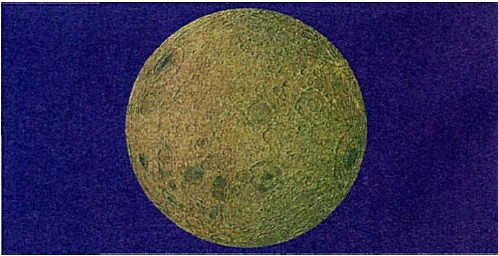
Figure 7.10: The photograph of AMS Luna-3 was used to create an image of the back side of the Moon. Many craters on the Moon were named after Ukrainian astronomers.
In February 1966, Luna-9 successfully landed in the Ocean of Storms and transmitted the world’s first television “report” from the surface of another celestial body. It was observed that the Moon’s surface was indeed covered in dust, but the ground was strong enough to keep the station in place. The Moon was further explored by AMS Lunokhod-1 and 2 (Figure 7.11), which traveled across the surface, and AMS Luna-20 and 24, which autonomously delivered samples of lunar soil to Earth for the first time.
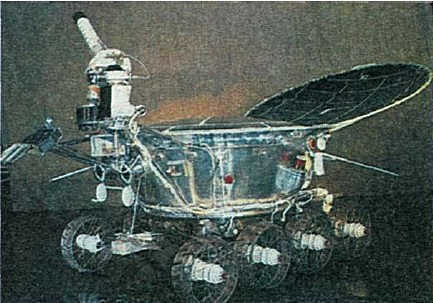
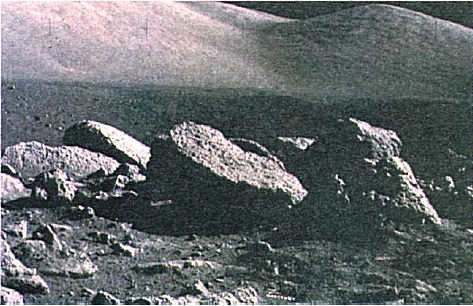
Figure 7.12: An example of a typical lunar environment. The surface is primarily characterized by the dark gray hue of the terrain, coated with a layer of regolith
The key phases of lunar space exploration

For aspiring astronauts
Is it possible for humanity to utilize the Moon as a foundation for space settlements? Taking into account the expenses associated with space travel, every kilogram of lunar soil brought back to Earth by astronauts holds the same value as a ton of gold extracted from mines on our planet. Nonetheless, the primary objective of scientific exploration is to establish a lunar base in order to conduct research on planets that are even farther away. Despite the fact that the weight of astronauts on the Moon is six times less than on Earth, it is still uncomfortable to walk on the lunar surface in a spacesuit due to the reduced friction force. However, it is feasible to construct living quarters below the surface, where the temperature remains constant day and night at a depth of several meters. Additionally, solar power plants can be utilized as a source of energy. Furthermore, the Moon’s surface is an ideal location for large telescopes, as the absence of an atmosphere eliminates any impact on image quality, allowing for the acquisition of a wealth of information about distant worlds.
Findings
The Earth and the Moon both receive a similar amount of solar energy on their surfaces, however, their physical environments vary greatly. This discrepancy in climate is primarily due to the absence of an atmosphere on the Moon. Earth’s atmosphere acts as a protective shield, increasing temperatures and safeguarding life from harmful cosmic radiation. In contrast, the Moon is an uninhabitable, lifeless celestial body. In the coming years, there is potential for scientific research facilities to be established underground on the Moon.
Tests
- The temperature in the Earth’s interior changes as you go deeper:
- A. It decreases because the Sun only heats the surface.
- B. It decreases because there is a layer of permafrost beneath the surface.
- C. It increases because chemical reactions occur at the center of the Earth.
- D. It increases as the nuclei of heavy chemical elements undergo radioactive decay in the interior.
- E. It remains stable.
- The troposphere is the lower layer of Earth’s atmosphere where the temperature changes with altitude:
- A. It increases because the upper atmosphere is closer to the Sun.
- B. It increases because there are no clouds in the upper atmosphere.
- C. It decreases because the atmosphere is heated by the Earth.
- D. It decreases because there is less oxygen in the upper atmosphere.
- E. It remains stable.
- Suppose there is a lunar eclipse occurring on Earth today. What will astronauts witness on the Moon during this time?
- A. Sunrise.
- B. The culmination of the Sun.
- C. The solar eclipse.
- D. An eclipse of the Moon.
- E. Sunsets.
- The full Moon is on the horizon. At what time of day can this phenomenon be observed in Ukraine?
- A. In the morning.
- B. In the afternoon.
- C. In the evening.
- D. At midnight.
- E. Never.
- Which of these instruments can be used by astronauts on the lunar surface?
- A. A compass.
- B. Telescope.
- C. A radio receiver.
- D. A television set.
- E. Barometer.
- Which group of planets does Earth belong to?
- Why do the continents not have a significant temperature difference throughout the year?
- How does the temperature change in the troposphere as altitude increases?
- Today, the Moon is in its first quarter. Will it be visible at midnight tomorrow?
- Why is it not possible for water on the Moon’s surface to exist in a liquid state?
- What is the reason we can only see one hemisphere of the Moon from Earth’s surface?
- Using a star map that moves, determine which constellation the Moon is positioned against on the day of your birth in the current year. Also, when does the Moon rise and set on this day?
- Measure the angle between the Sun’s direction and the Moon’s direction to determine its phase. The first quarter occurs when this angle is 90°, and the full moon occurs when it is 180°.
Key Concepts and Terms:
There is a natural catastrophe occurring in the environment, with the Moon and Sun being obscured, resulting in the formation of a large hole in the ground known as a crater. Additionally, there is a period of extreme cold known as an ice age, and a phenomenon called the greenhouse effect which is causing significant changes in the Earth’s climate. Moreover, there is a layer of loose material on the surface of the Moon called regolith, and two different types of lunar months known as sideric and synodic months. Lastly, there is a layer of the Earth’s atmosphere closest to the surface called the troposphere, and different stages of the Moon’s illumination known as phases.
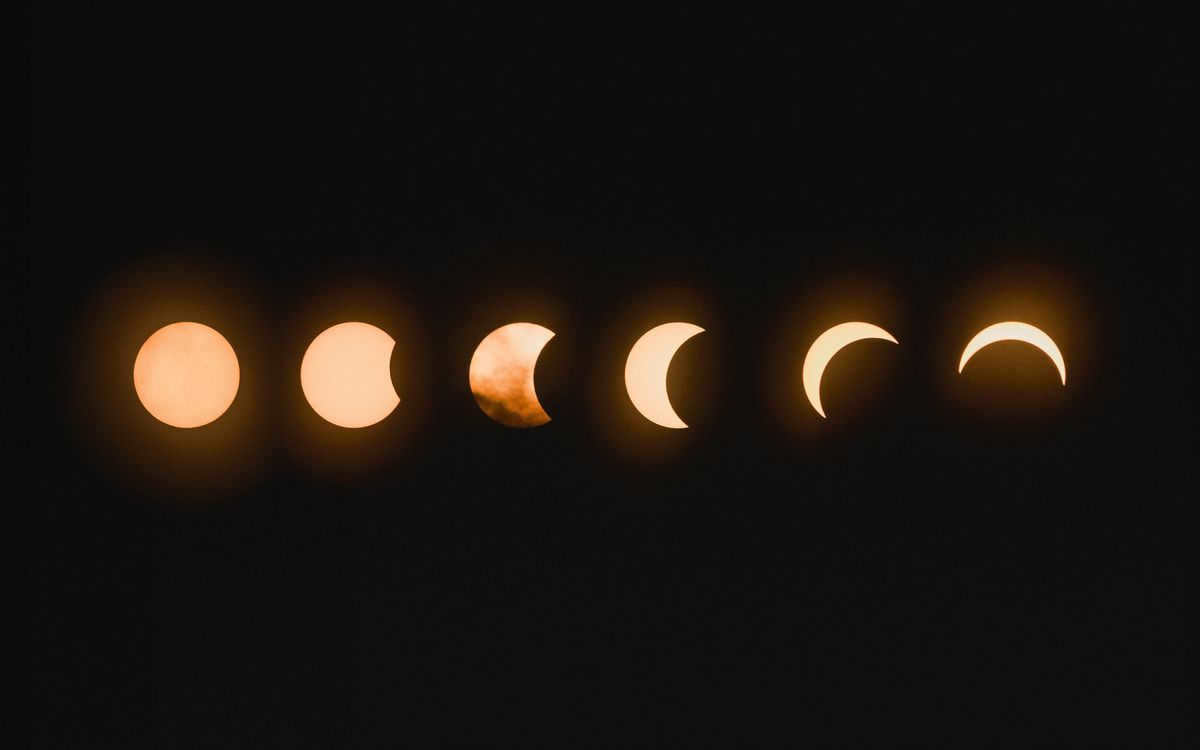
On the 16th of November, a Space Launch System (SLS) rocket was launched by NASA, carrying the Orion spacecraft to its destination on the Moon. This marks the first milestone in the Artemis mission, a NASA space program aimed at landing astronauts on both the Moon and Mars. The program, which began in 2017 and is financed by the U.S. government, initially focused on the commercial mining of lunar fossils.
In 2019, NASA unveiled an elaborate blueprint for the groundbreaking Artemis initiative. The organization’s ambitious objective is to establish a sustainable human settlement on the Moon, which will serve as a pivotal stepping stone towards the ultimate goal of exploring Mars. The initial phase of the mission involves conducting unmanned and manned missions in lunar orbit, followed by the historic landing of astronauts on Earth’s natural satellite. The subsequent stage entails establishing routine lunar missions and constructing essential infrastructure on the lunar surface.
The Moon presents challenges with its extreme temperatures, radiation levels, and meteorite risks
Ensuring a secure location for a lunar base is paramount to NASA’s ambitions of exploring the Moon, as it is an incredibly harsh environment. Surface temperatures fluctuate drastically, reaching lows of -180°C at night and highs of +130°C during the day. Furthermore, the absence of a magnetic field exposes astronauts to radiation levels that are 200 times more potent than those on Earth. The Moon’s lack of atmosphere also intensifies the impact force and velocity of meteorites, making rocks and debris from collisions an additional hazard. Complicating matters further, the lunar day-night cycle lasts approximately 30 Earth days, necessitating adjustment to 15 days of darkness followed by 15 consecutive days of light.
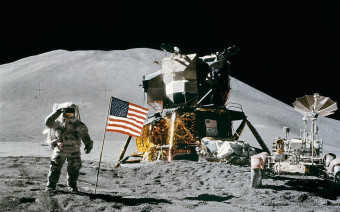
Seeking refuge from the harsh conditions can be achieved within a lava tube
Lava tubes are subterranean passageways that were created over 2 billion years ago during the moon’s volcanic era. Since 2009, astronomers have identified 16 depressions on the lunar surface that formed as a result of collapsed lava tube ceilings. In the future, astronauts could enter these tubes through these pits and establish a base within the cavern. This would provide them with protection against cosmic radiation and meteorites, as well as direct access to the moon’s surface.
The lava tube maintains a consistent temperature
Having a base inside a lava tube would also enable astronauts to avoid drastic temperature changes. By utilizing computer models and data gathered by a thermal camera aboard NASA’s orbiter, researchers have determined that the temperature inside the shaded section of the lunar pit remains around 17º C throughout the monthly day-night cycle. It is believed that this temperature is maintained because the canopy above the pit prevents the area from becoming too hot during the day, while also retaining the heat emitted from the pit at night.
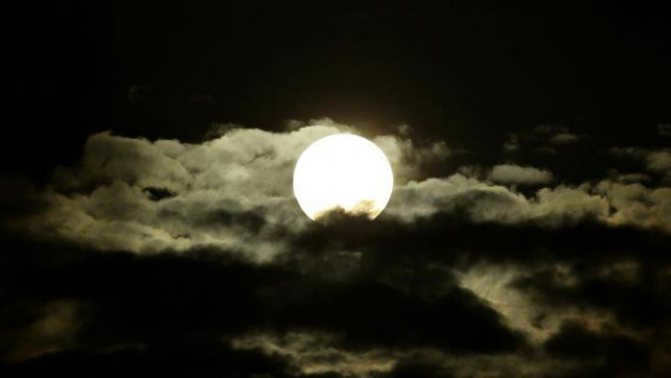
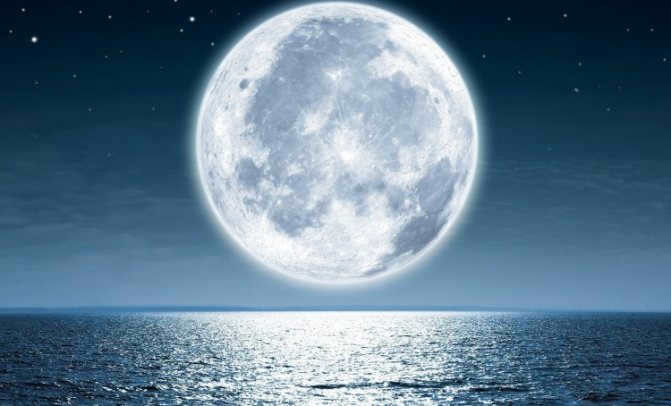

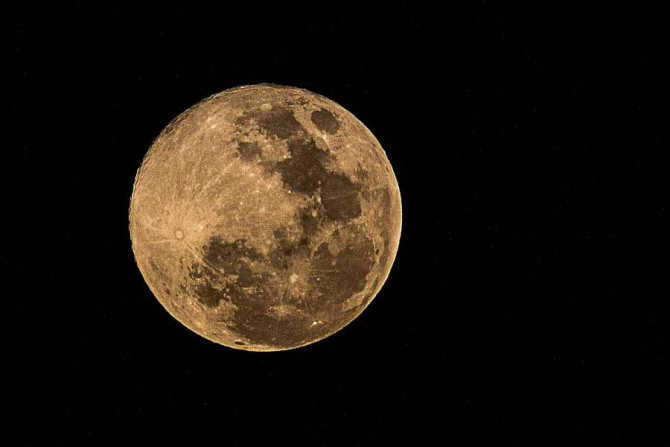
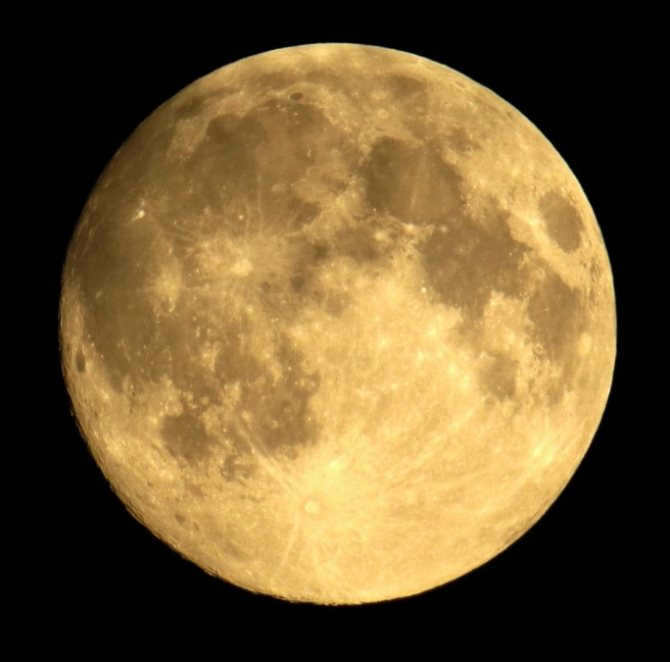
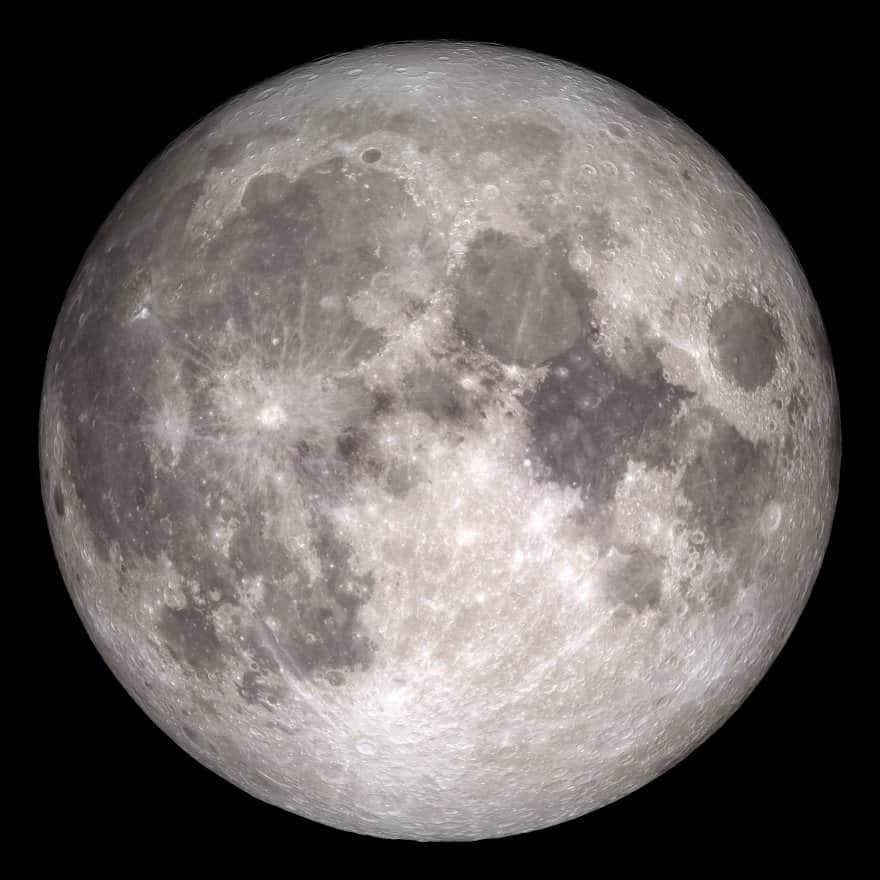
The moon is Earth’s only natural satellite and is the second brightest celestial object in the sky, after the Sun. As the Moon completes its one-month orbit around the Earth, the angle between the Earth, Moon, and Sun changes, resulting in the different phases of the Moon that we observe.
Although the Moon does rotate on its axis, it always presents the same face to the Earth. This is because the Moon takes the same amount of time (27.3 days) to complete one rotation on its axis as it does to orbit around the Earth. Since the direction of both rotations align, the opposite side of the Moon is never visible from Earth.
Due to the Moon’s elliptical orbit around the Earth, only 59% of its surface is visible from our perspective on Earth.
- The Luna-2 spacecraft, launched in the USSR on September 12, 1959, was the first to reach the surface of the Moon.
- On July 20, 1969, American astronauts from Apollo 11 became the first humans to set foot on the Moon.
Even prior to the advent of space exploration, astronomers had already noted the Moon’s unique characteristics.
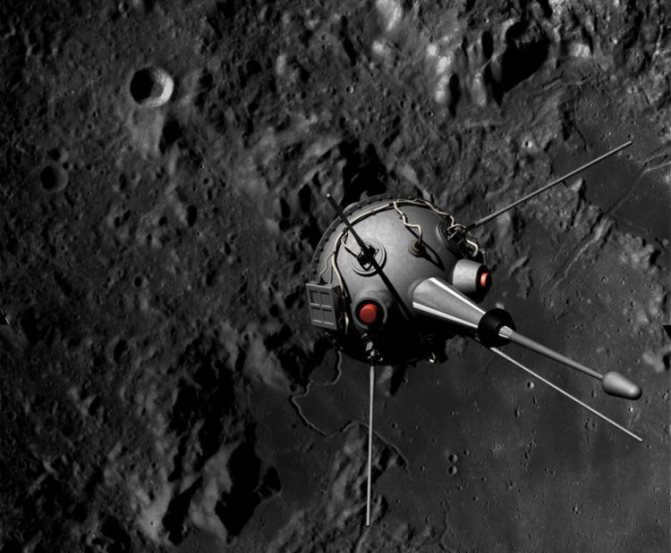
The Moon’s density is lower than that of any planet in the Earth group (Earth, Mars, Venus, Mercury) – it is only 3.3 times the density of water. This fact itself demonstrates the unusual formation conditions of the satellite.
Through analyzing soil samples from its surface, scientists have determined the chemical composition and age of the Moon (the oldest samples are 4.1 billion years old), which has further complicated understanding of the celestial body’s origin.
Currently, the prevailing theory among scientists is that the Moon was formed as a result of a collision between a large celestial body and the Earth.
The Comparison of the Moon with Satellites of Other Planets
Although the Moon is not as large as some other satellites in our solar system, it holds the distinction of being the largest satellite in proportion to its planet, Earth.
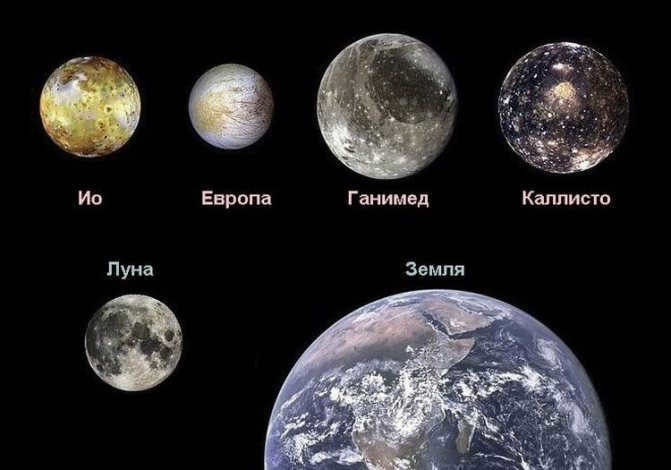
The Moon is a significant natural satellite. It ranks fifth among the 91 satellites in the solar system in terms of size, surpassed only by the satellites of other planets like Io, Callisto, Ganymede, and Titan.
Interesting facts about the Moon
There is no “dark side”
- Contrary to popular belief, there is no permanent dark side of the Moon. Both sides of the Moon receive the same amount of solar illumination. However, due to the synchronous rotation of the Moon, only one side is visible from Earth. The term “dark side” is often used to refer to the side of the Moon that is not currently facing Earth, but this side is still illuminated by the Sun and can be explored by spacecraft.
The Moon affects Earth’s tides
- The gravitational pull of the Moon causes two bulges, or tidal bulges, on Earth. One bulge is on the side of the Earth facing the Moon, and the other bulge is on the opposite side. These bulges result in the phenomenon of high and low tides across the Earth.
The Moon is slowly moving away from Earth
- The gravitational pull on the Moon is much weaker
- The Moon has a lower gravitational force compared to Earth, so if you were on the Moon, you would weigh about 1/6th of your weight on Earth. This is why astronauts had to move by hopping, similar to kangaroos.
- A total of 12 astronauts have set foot on the Moon
- The first person to step onto the Moon was Neil Armstrong during the Apollo 11 mission in 1969. The last person was Eugene Cernan in 1972. Since then, only robotic missions have been sent to the Moon.
- The Moon has no atmosphere
- This means that the Moon’s surface, as shown in the photo, lacks protection from cosmic radiation, meteor impacts, and solar wind. It also experiences extreme temperature changes. There is no sound on the Moon, and the sky always appears black.
Earthquakes occur due to Earth’s gravitational forces.
- Seismographs used by astronauts have revealed cracks and fractures several kilometers beneath the surface. It is believed that the satellite has a molten core.
The first lunar lander arrived in 1959.
- The Soviet Luna-1 spacecraft was the first to reach the Moon. It passed by the satellite at a distance of 5995 km before entering orbit around the Sun.
The Moon is the fifth largest satellite in the solar system.
- With a diameter of 3,475 kilometers, the Moon is significantly smaller than Earth, which is 80 times larger. However, they are approximately the same age. The prevailing theory suggests that a large object collided with Earth during its early formation, causing material to be ejected into space.
We will be returning to the Moon once again
- NASA has intentions to establish a permanent settlement on the lunar surface to ensure a continuous presence of humans. The project could commence as early as 2020.
In the year 1950, there were strategies to detonate a nuclear bomb on a satellite.
- This classified initiative, known as Project A119, was part of the covert activities during the Cold War. Its success would have given a significant advantage to one of the nations involved.
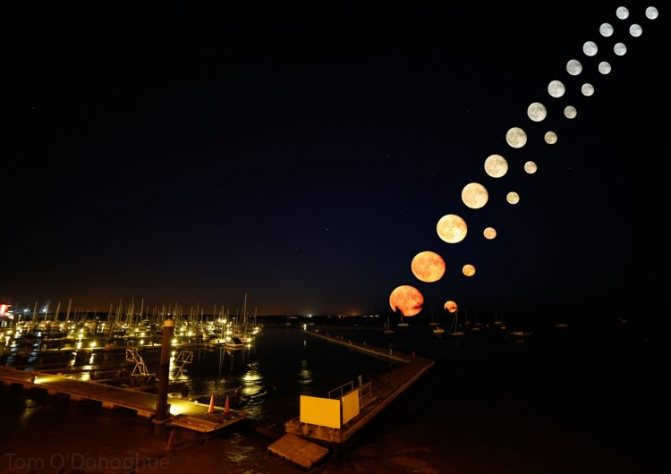
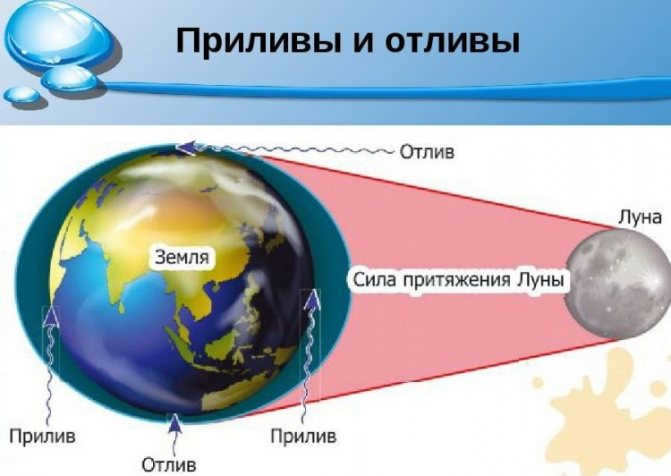
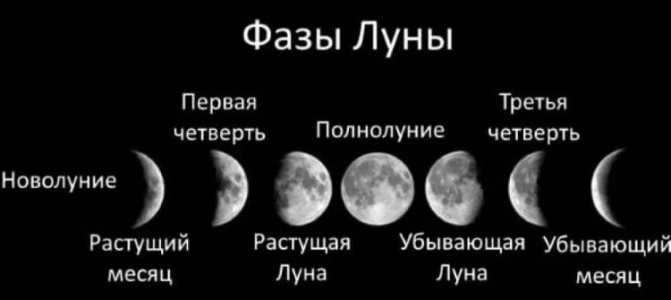
Additional characteristics.
The Moon has a scarcity of mountain chains, which are commonly found on Earth. The primary mountain chains on the visible side of the Moon (such as the Apennines, the Alps, and the Caucasus) were formed due to the collision that led to the creation of the Sea of Rains. There are also concentric chains of mountains surrounding some other lunar seas. Notably, some mountains along the southern edge of the Moon reach heights comparable to Mount Everest. Wrinkles formed by compression can be observed within most seas. These wrinkles often exhibit a stepped structure with parallel but slightly offset segments. In some cases, they resemble a rather intricate braid.
Cracks and canyons that are 1-2 km wide often extend for hundreds of kilometers in a nearly straight line. Their depths range from one to several hundred meters, and there are over a thousand of them documented in catalogs. These fractures in the lava crust are often found parallel to the edges of seas, with some resembling the meandering patterns of terrestrial rivers.
Wrinkles, fissures, and valleys of various widths and sizes create a massive network. The radial relief patterns associated with the Sea of Rains represent the largest interconnected system on the Moon. Some scientists propose that this reticulated system is a reflection of internal lunar processes involving stress and compression. However, others believe it is the result of external impacts from collisions that gave rise to the seas.
There have been numerous other discoveries made on the Moon as well. One of the most impressive findings is the Straight Wall, a massive fault that extends approximately 170 km in the Sea of Clouds. This fault is characterized by a steep cliff that rises about 300 m high. The Reith Valley serves as an example of a graben, which is a rupture zone where a significant portion of the surface has started to sink. Additionally, scientists have come across several small dormant volcanoes on the lunar seafloor. Another intriguing feature of the Moon’s surface is the presence of small lava domes. For more information, please refer to the sections on MOONS PROCESSING AND HISTORY; COSMOS RESEARCH AND USE; PRILIVES AND TREATMENT.
Exploring the Moon’s Size, Mass, and Orbit
We should examine the characteristics and parameters of the Moon. With a radius of 1737 km and a mass of 7.3477 x 1022 kg, it is smaller and less massive than our planet. However, when compared to other celestial bodies in the solar system, the Moon is relatively large, ranking second after Charon in size. It has a density index of 3.3464 g/cm3, placing it second among moons after Io, and a gravity of 1.622 m/s2, which is approximately 17% of Earth’s gravity.
The Moon has an eccentricity of 0.0549 and its orbital path ranges from 356400 to 370400 km at perihelion and from 40400 to 406700 km at aphelion. It completes one orbit around the Earth in 27.321582 days. Additionally, the Moon is in a tidal lock, meaning that one side is always facing towards us.
Physical characteristics of the Moon
Temperature variations
The temperature on the lunar surface and its fluctuation patterns are monitored using specialized infrared sensors installed on nearby lunar orbit stations. The data collected by these instruments are known for their high precision.
During the daytime, the average temperature on the Moon’s surface reaches +127°C. However, it gradually decreases as it moves towards the poles, reaching a range of +10 to -15°C. At night, the temperature plummets to -173°C across most of the lunar surface. The lowest recorded temperatures are found in the polar craters, where it can drop to -238°C at the South Pole and -247°C at the North Pole.
At depths exceeding 1 meter, the indicators remain consistent. This stability can be attributed to the dense concentration of rocks. In this region, permafrost is prevalent nearly everywhere, and even during daylight hours, the rocks do not exceed temperatures of -5°C. It is widely believed that the heat transfer rates are significantly lower in polar regions, primarily due to the high density of rocks. Consequently, the sun’s rays are unable to warm the surface layer in these areas.
The Structure and Surface of the Moon
The Moon shares similarities with Earth, possessing an inner and outer core, mantle, and crust. The core of the Moon is a solid iron sphere that stretches for 240 kilometers. Surrounding the core is the outer core, consisting of liquid iron, which spans a distance of 300 kilometers.
Adjacent to the outer core is a half-molten layer that extends 500 kilometers. It is hypothesized that this layer formed through the solidification of a global magma ocean approximately 4.5 billion years ago. As a result, the mantle of the Moon contains magnesium and iron, along with igneous rocks that contain higher levels of iron compared to Earth.
The crust of the Moon spans 50 kilometers. The core accounts for only 20% of the Moon’s overall structure and contains not only metallic iron, but also trace amounts of sulfur and nickel. The diagram provides a visual representation of the Moon’s composition.
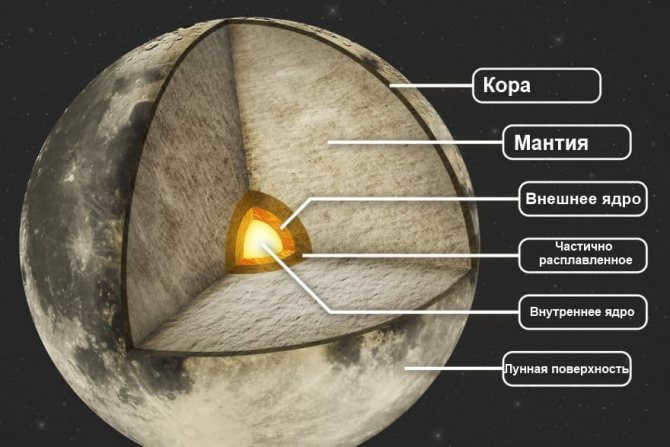
Scientists have succeeded in verifying the existence of water on the moon, with the majority of it being concentrated in polar regions within shaded crater formations and underground reservoirs. It is believed to have originated from the moon’s interaction with the solar wind.
The geology of the moon differs from that of Earth. Due to its lack of a dense atmospheric layer, there is no weathering or wind erosion. The moon’s small size and low gravity lead to rapid cooling and a lack of tectonic activity. One can observe a vast number of craters and volcanoes, as well as ridges, wrinkles, highlands, and depressions spread throughout its surface.
The most noticeable difference is seen in the contrast between the lighter and darker regions. The lighter areas, known as lunar uplands, are formed by igneous rocks consisting of feldspar and containing small amounts of magnesium, pyroxene, iron, olivine, magnetite, and ilmenite. On the other hand, the darker regions, called seas, have a distinct composition and appearance.
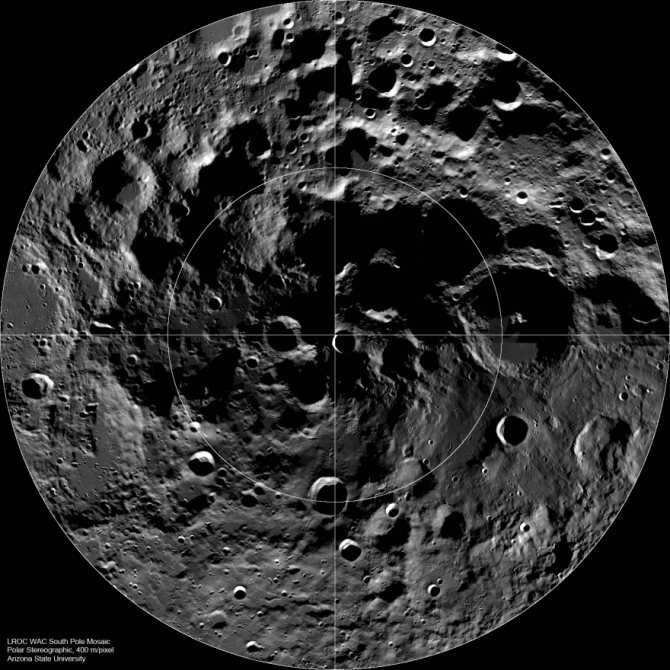
The lunar South Pole area, measuring 600 km in length, was captured by the LROC camera.
The seas are predominantly composed of basaltic rock, and often coincide with lowland regions. Notably, there are observable canals in both arc-shaped and linear formations. These canals are actually lava tubes that have cooled and collapsed during periods of volcanic inactivity.
An intriguing feature of the moon’s surface is the presence of moon domes, which are formed by the eruption of lava through vents. These domes have gentle slopes and measure 8-12 kilometers in diameter. The wrinkles on the moon’s surface are a result of tectonic plate compression, with the majority of them occurring within the seas.
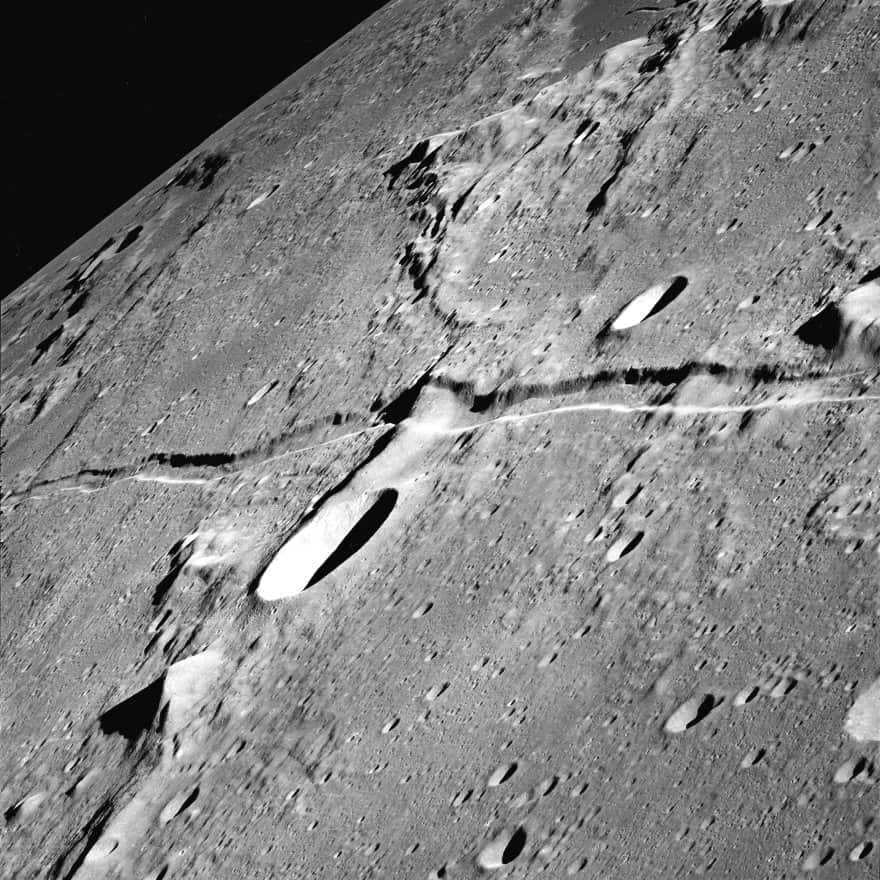

The Apollo 10 mission captured the Ariadeus furrow, showcasing one of the notable features of our satellite – impact craters formed by the falling of large space rocks. The impact energy creates a shock wave that leads to a depression and the ejection of a significant amount of material. These craters can vary in size, ranging from small pits to ones as large as 2500 km and 13 km deep (Aitken). While the largest craters formed in the early history of the moon, they have since started to shrink. There are approximately 300,000 depressions with a width of 1 km that have been identified.
Another fascinating aspect is the lunar regolith. It originated from the collisions of asteroids and comets billions of years in the past. These celestial bodies broke apart, resulting in the formation of fine dust particles that blanketed the entire lunar surface.
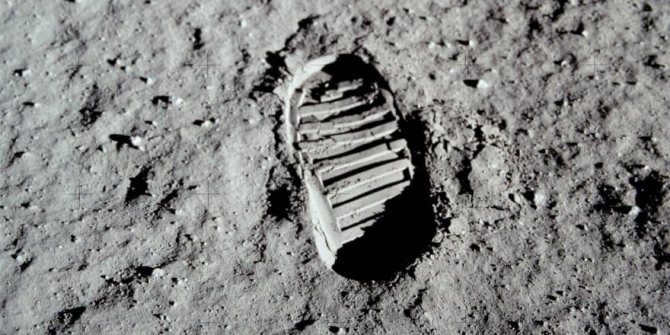

A captured moment of the iconic footprint left behind by the Apollo 11 astronauts.
The composition of the regolith varies depending on its location. The mountains contain abundant amounts of aluminum and silicon dioxide, while the seas showcase high levels of iron and magnesium. The geological characteristics of the moon were studied not only through telescopic observations, but also by analyzing collected samples.
There are various hypotheses surrounding the origin of Earth’s moon. Some propose that it was formed through the Earth’s gravitational pull, causing a pre-existing satellite to be attracted and join together in the solar accretion disk. This event is estimated to have occurred around 4.4 to 4.5 billion years ago.
However, the prevailing theory suggests that the moon was created through a massive impact. It is believed that a celestial body called Teia collided with the proto-Earth approximately 4.5 billion years ago. The resulting debris then began orbiting our planet and eventually coalesced to form the Moon. Computer models have provided support for this theory, and further evidence comes from the nearly identical isotopic compositions found in both Earth and Moon samples.
The Influence of the Moon on Earth
The Earth’s natural satellite, the Moon, completes one revolution around our planet in approximately 27.3 days, known as its sidereal period. However, both the Moon and Earth orbit the Sun simultaneously, resulting in the Moon taking around 29.5 days per phase as observed from Earth.
The presence of the Moon has a significant impact on our planet, particularly in terms of tidal effects. These effects are most noticeable when observing the rise in sea level. Compared to the lunar rotation, the Earth’s rotation is approximately 27 times faster. The frictional coupling between water and the Earth’s rotation, aided by ocean floors, water inertia, and wobbling basins, amplifies ocean tides.
Furthermore, the angular momentum of the Moon accelerates its orbit and causes it to gradually move further away from Earth, resulting in a longer orbital period. This phenomenon not only leads to an increasing distance between the Moon and Earth, but also causes a slowdown in the Earth’s rotation. In fact, the Moon is moving away from us at a rate of approximately 38 millimeters per year.
Ultimately, we will achieve a shared tidal lock, replicating the scenario witnessed with Pluto and Charon. However, this process would require billions of years. Therefore, it is more probable that the Sun will expand into a red giant and engulf us.
Tidal activity is also observed on the lunar surface, reaching an amplitude of 10 cm over a 27-day period. These lunar tides result from cumulative stress. Furthermore, these tides last an hour longer due to the absence of water to dampen the vibrations.
We must not overlook the awe-inspiring occurrence of an eclipse. This phenomenon transpires when the Sun, a satellite, and our planet align in a straight formation. A lunar eclipse emerges when the full Moon emerges from behind the Earth’s shadow, while a solar eclipse takes place when the Moon positions itself between a star and the planet. During a total eclipse, the solar corona is visible.
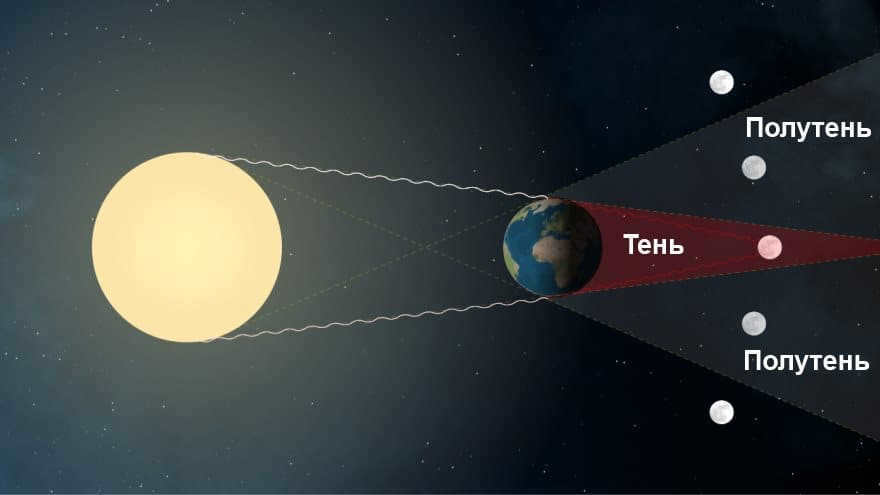

Representation of a complete lunar eclipse
Due to the inclination of the lunar orbit by 5° to the Earth’s orbit, eclipses happen at specific times. The moon must be close to the point where the orbital planes intersect. This cycle repeats every 18 years.
Lunar phases
The moon does not emit its own light. The parts of the moon that are visible to us are the ones that are illuminated by the sunlight reflected off the Earth’s surface. This is how we can understand the different lunar phases. As the moon moves in its orbit, it sometimes comes between the Sun and the Earth. During this time, the moon’s unlit side faces the Earth, and this is known as the new moon phase. Within 1-3 days after the new moon, a thin crescent shape can be seen in the western part of the sky, which represents the visible portion of the moon. About a week later, we reach the second quarter phase, when exactly half of the moon is illuminated.
Observation of the Moon throughout history
What is the historical account of exploring the Moon? Being a close and visible satellite in the sky, it has likely been observed by early humans. The earliest records of lunar cycles date back to the 5th century B.C. when Babylonian scientists recorded an 18-year cycle.
In ancient Greece, Anaxagoras proposed that the sun and the Moon were large spherical rocks that reflected sunlight. Around 350 BC, Aristotle believed that the Moon was the dividing line between the spheres of the elements.
The prediction of lunar eclipses by the Chinese dates back to the 4th century B.C. During this time, they had already come to understand that the moon reflects sunlight and has a spherical shape. Alhazen, on the other hand, proposed that the sun’s rays are not reflected but emitted from different parts of the moon in all directions.
Before the invention of the telescope, it was widely believed that the moon was a smooth and spherical object. However, in 1609, Galileo Galilei’s sketch revealed the presence of craters and mountains on the moon’s surface. This groundbreaking observation, along with other celestial observations, played a crucial role in advancing Copernicus’ heliocentric concept.
The invention of telescopes resulted in the identification of surface characteristics. Scientists, artists, and influential individuals were honored by having craters, mountains, valleys, and seas named after them. Initially, it was believed that all craters were formed by volcanic activity until Richard Proctor proposed the idea that they could actually be caused by impacts.
Investigating the Moon: A Journey of Discovery
The era of space exploration ushered in a new era of understanding as we delved into the mysteries of our celestial neighbor. Fueled by the intense competition of the Cold War, both the USSR and the USA rapidly developed cutting-edge technologies, with the Moon emerging as the primary focus of their research and exploration efforts. What began with the launch of unmanned spacecraft soon culminated in groundbreaking human missions, forever changing our perspective on the Moon.
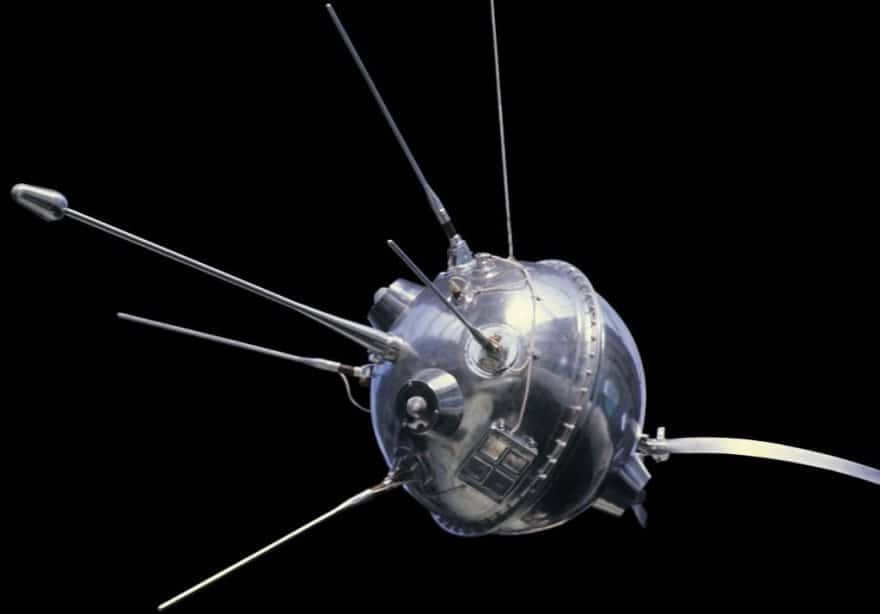
The Soviet Union initiated the “Moon” program in 1958, during which the initial three probes were unsuccessful in landing on the lunar surface. However, the following year, the country achieved success by delivering 15 vehicles and obtaining the first set of data, including gravity information and surface images. Subsequent missions 16, 20, and 24 also successfully collected samples from the moon.
Among the notable models utilized in the program were Luna-17 and Luna-21, which featured innovative technologies. However, the Soviet program eventually concluded, limiting the probes to surface imaging purposes only.
In the 1960s, NASA launched its own lunar exploration probes. The Ranger program, operational between 1961 and 1965, extensively mapped the lunar landscape. This was followed by the landing of rovers during the years 1966 to 1968.
During the Apollo 11-17 missions, a total of 13 astronauts were involved. Their main achievement was the extraction of 380 kilograms of rock samples from the lunar surface. Additionally, all the participants were actively involved in various research activities. Following this period, there was a significant lull in lunar exploration.
However, in 1990, Japan emerged as the third country to successfully place its probe in lunar orbit, joining the United States and the Soviet Union. This marked a significant milestone in space exploration.
In 1994, the United States launched the spacecraft Clementine, which had the primary objective of creating a detailed topographic map of the Moon. This mission proved successful and in 1998, Clementine made a groundbreaking discovery by identifying ice deposits in the lunar craters. This finding opened up new possibilities for future exploration and research.
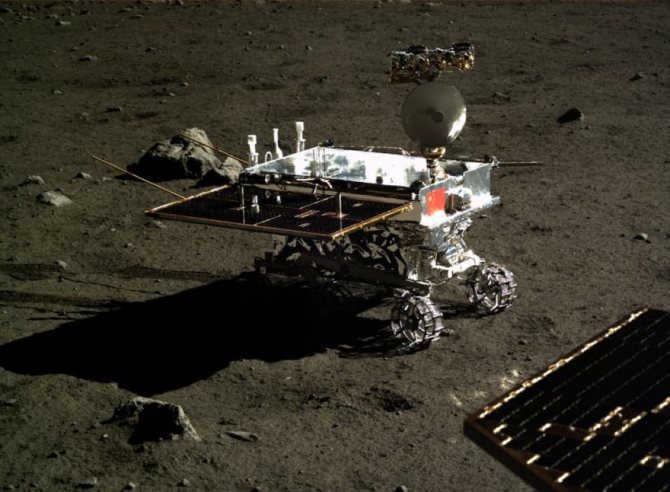
The Chane-3 landing site and the lunar surface were the subject of exploration by multiple countries in the early 2000s. In 2004, the European Space Agency (ESA) launched the SMART-1 spacecraft with the goal of analyzing the chemical composition of the moon in detail. The Chane program, initiated by China, also sent probes to the moon. The first probe arrived in 2007 and remained in lunar orbit for 16 months. The second probe successfully observed the arrival of asteroid 4179 Tutatis in December 2012. In 2013, Chane-3 landed on the lunar surface, deploying a rover for further exploration.
In 2009, the Japanese probe Kaguya entered lunar orbit and conducted studies on lunar geophysics. It also captured two full video views of the moon. From 2008 to 2009, the Indian Space Research Organisation’s (ISRO) Chandrayaan mission also orbited the moon, creating high-resolution maps of the moon’s chemical composition, mineralogy, and geology.
NASA employed the LRO spacecraft and the LCROSS satellite in 2009. In 2012, two more NASA rovers investigated the inner composition.
According to the treaty among nations, the satellite is considered a shared asset, allowing all countries to send their missions. China is actively preparing a project for colonization and is presently conducting experiments on human subjects, who are confined within specialized domes for extended durations. The United States is also not falling behind, as it too has plans to establish a lunar population.
Explore the resources available on our website to discover stunning and high-resolution photographs of the Moon. Take advantage of the useful links provided to gather a wealth of information about this fascinating satellite. To stay updated on the Moon’s current state, simply navigate to the relevant sections. If you’re unable to purchase a telescope or binoculars, you can still observe the Moon in real-time through an online telescope. The constantly updated imagery reveals the Moon’s cratered surface in all its glory. Additionally, our site provides tracking of the Moon’s phases and orbital position. You’ll also find a captivating and user-friendly 3D model showcasing the Moon, the solar system, and other celestial bodies. Finally, we’ve included a map of the lunar surface below.
Earth’s Satellites: From Artificial to Natural
Astronomer Vladimir Surdin shares insights on Moon expeditions, the Apollo 11 landing site, and the astronauts’ equipment.
The Future
The Moon is considered to be one of the primary candidates for establishing a human colony. It is viewed as a crucial stepping stone for space exploration, serving as a transit base between Earth and other celestial bodies. The Moon’s low gravity and thin atmosphere make it an ideal location for launching interplanetary spacecraft, and its subsurface contains significant mineral deposits that could be used as a valuable fuel resource. Roscosmos, the Russian space agency, is currently planning a mission to thoroughly investigate the lunar surface within the timeframe of 2021 to 2040.
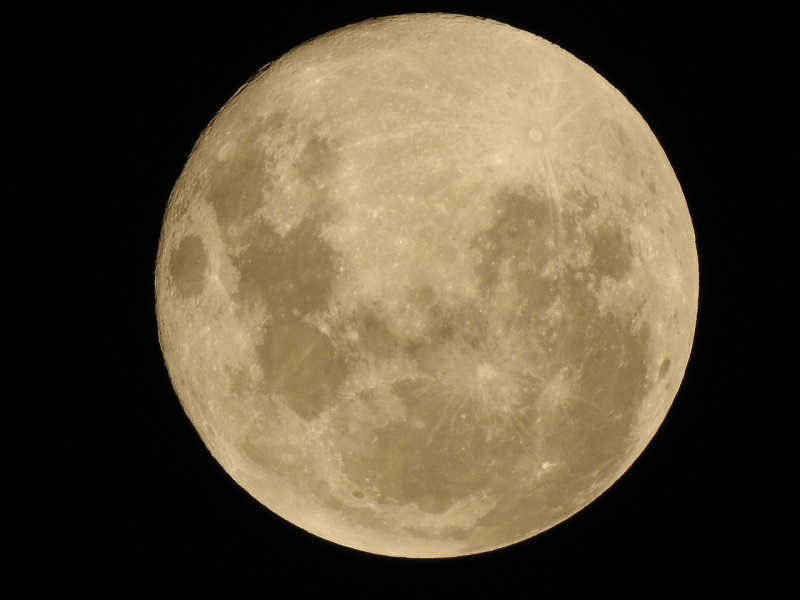
The Moon is Earth’s only natural satellite and it is the closest satellite to the Sun among all the planets. Mercury and Venus, the planets closest to the Sun, do not have any satellites. The Moon’s orbit around the Earth is approximately 400 thousand kilometers.
Astronomers have extensively searched for any other natural satellites around the Earth, even the smallest ones. However, organized surveys have confirmed that there are no other natural satellites larger than 30 meters in the vicinity of the Earth. Compared to its counterpart, the Earth, the Moon is relatively small; its cross-section is four times smaller than that of the Earth. The Moon’s mass is 81 times less than that of the Earth.
The average distance between the Earth and the Moon’s centers is 384,467 km, which is approximately equal to 30 times the diameter of the Earth.
The Moon emerged approximately 4.51 billion years ago, slightly after the Earth did. The prevailing theory suggests that the Moon was created from remnants that remained following the monumental impact between Earth and Teia, a planet of comparable size to Mars.
The Moon stands as the solitary celestial body beyond Earth that has been explored by humans.
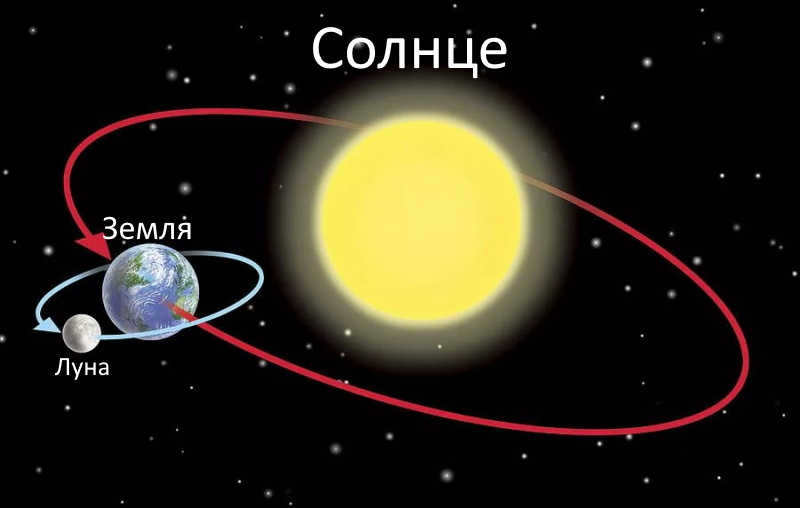
The Moon’s revolution around the Earth takes the exact same amount of time as its rotation around its own axis. This means that the Moon always presents the same side of its surface to the Earth.
The Moon’s surface is covered with a layer of crushed matter, formed from constant bombardment by meteorites. This layer, known as regolith, is several meters deep and has a spongy texture. The regolith helps to even out the extreme temperature variations on the Moon’s surface, which can range from +130 to -170 degrees Celsius at the equator. However, at just a few tens of centimeters below the surface, these temperature fluctuations are greatly reduced. Even at a depth of one meter, the temperature remains constant.
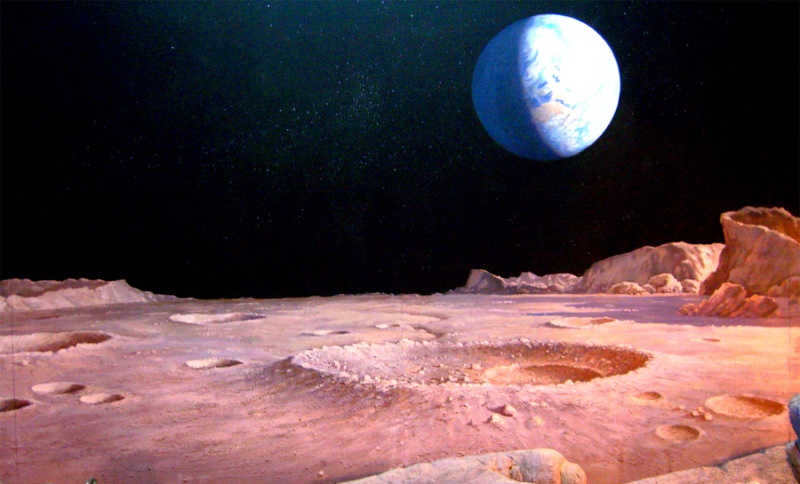
The Moon’s surface, much like that of Mercury, is filled with numerous craters. It is characterized by expansive lowlands that were once covered in basaltic lava, which have traditionally been referred to as lunar seas. Some of these lunar seas include the Sea of Rain, Sea of Cold, Sea of Clarity, Sea of Vapor, and others. The largest plain on the Moon is known as the Ocean of Storms. The Moon’s mountains share the same names as those on Earth, such as the Alps, the Caucasus, the Carpathians, and more. The majority of craters on the Moon are named after scientists.
Unlike the Earth, which has a compressed shape at the poles, the Moon has a much more spherical shape. The lunar sphere is significantly smaller in diameter compared to the Earth – almost 4 times smaller, and in terms of volume, it is 49 times smaller. The material that makes up the sphere could be used to create 81 shakes, with each shake weighing the same as the Moon.
When observing the Moon from Earth with the naked eye, we can see the same gray spots. This indicates that the Moon always shows the same side to the Earth. Therefore, a day on the Moon, which is the time it takes for it to complete one revolution on its axis, is equal to the time it takes for it to orbit around the Earth – approximately 27 1/3 days. The hidden side of the Moon, which cannot be seen from Earth, can only be studied with the help of spacecraft.
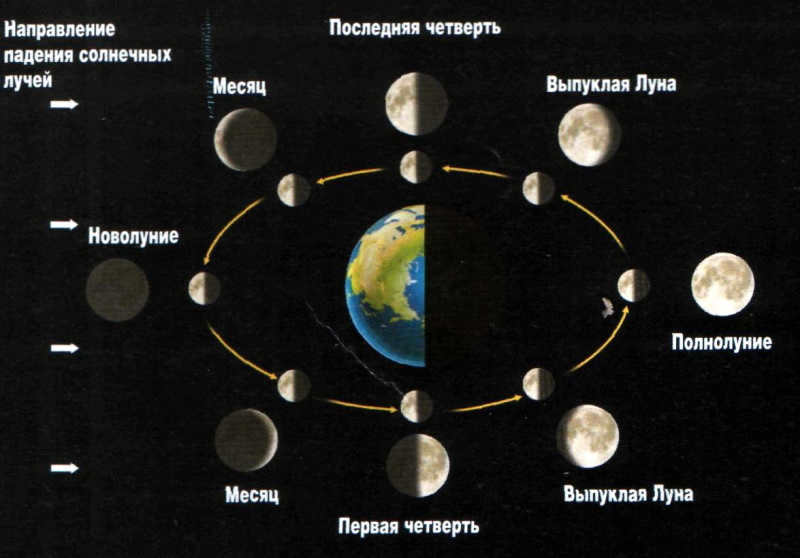

The Moon does not emit its own light. Instead, it shines at night because it reflects the sun’s rays. When the Earth is facing the sunlit half of the Moon, it appears as a round, bright disk – this is known as a full moon. However, most of the time, only a portion of the illuminated hemisphere is visible from Earth, resulting in crescent, semicircle, and incomplete circle shapes in the sky. When the Moon is positioned between the Sun and the Earth, it is not visible at all, creating a new moon phase.
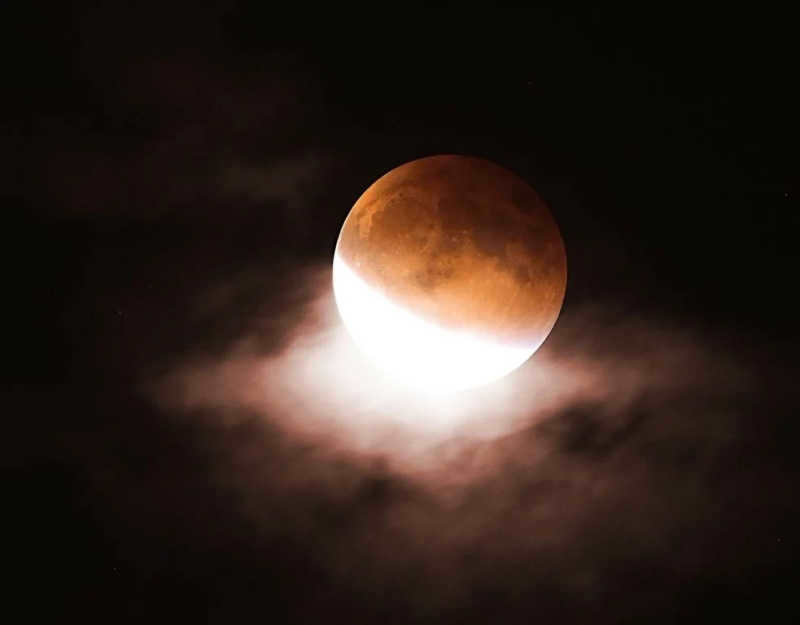

Occasionally, when the Moon is in its new phase, it blocks the Sun, resulting in a solar eclipse. Similarly, during a full moon, the Earth can cast its shadow on the Moon, leading to a lunar eclipse.
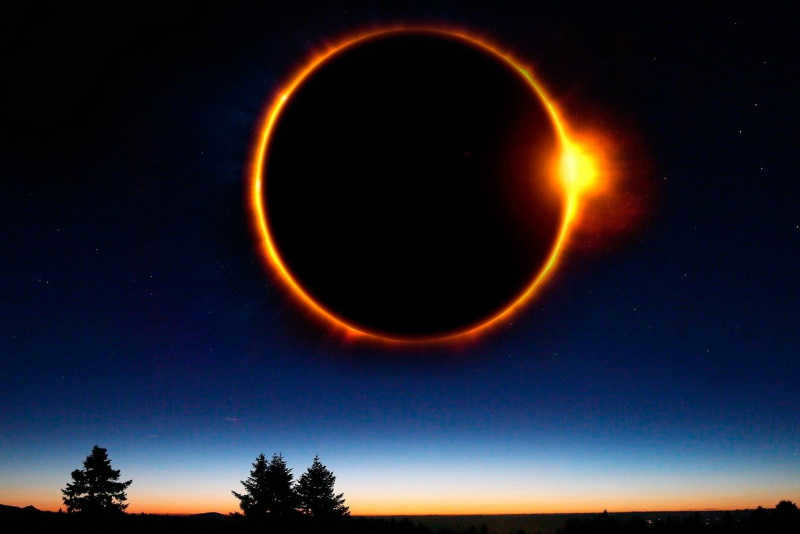
In ancient times, the gray areas on the Moon were believed to be vast bodies of water. However, our understanding has since evolved, revealing that the Moon is completely devoid of water and lacks both an atmospheric shell and any form of air. Instead, these lunar “seas” are actually sunken regions filled with gray volcanic rocks.
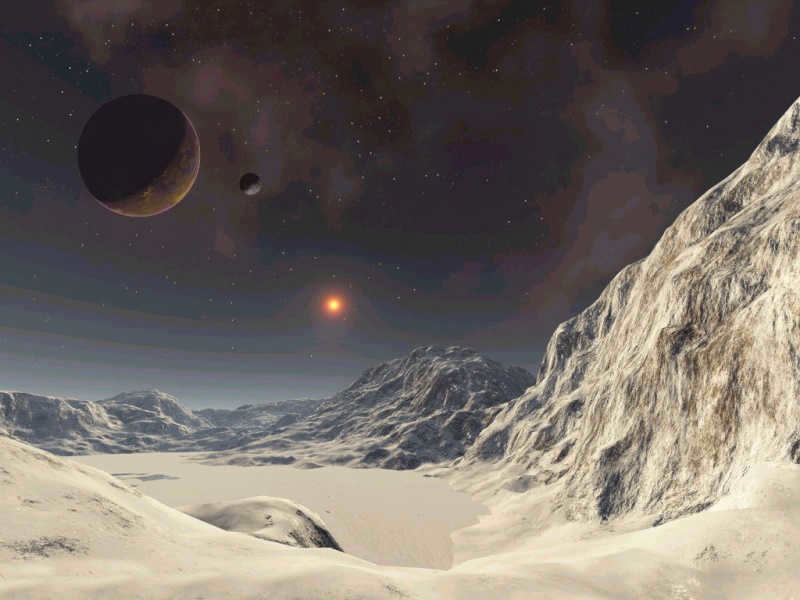
The mountainous areas on the Moon are responsible for its bright appearance. Even with the help of binoculars, one can observe the irregularities on the lunar surface, particularly the lunar mountains, when the Moon is in its crescent or semicircle phase. The Moon boasts numerous high mountain ranges, as well as an abundance of ring mountains known as craters.
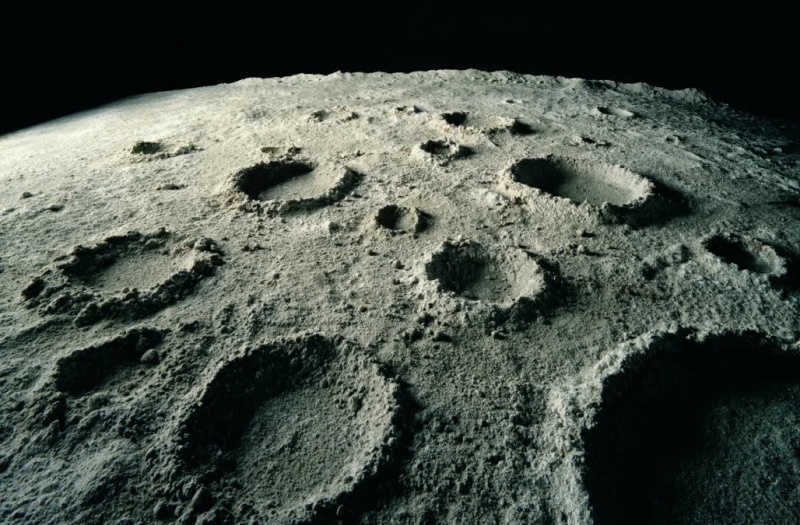
Several lunar craters were created when meteorites, consisting of iron or stone, descended onto the Moon from interplanetary space.
The largest lunar craters were formed through volcanic eruptions. Presently, some signs of gas eruptions from the lunar interior can still be observed by scientists. It is feasible that the temperature inside the Moon is exceedingly high.
Throughout the daytime, the surface of the Moon experiences temperatures that often reach 130 C. However, during the night, temperatures drop to minus 170 C. The temperature disparity between sunlight and shade on the Moon is significant since there is no atmosphere to equalize the temperature difference.
On the Moon, the force of gravity is only one-sixth of that on Earth, making it significantly easier for a spacecraft to launch from the lunar surface compared to Earth.
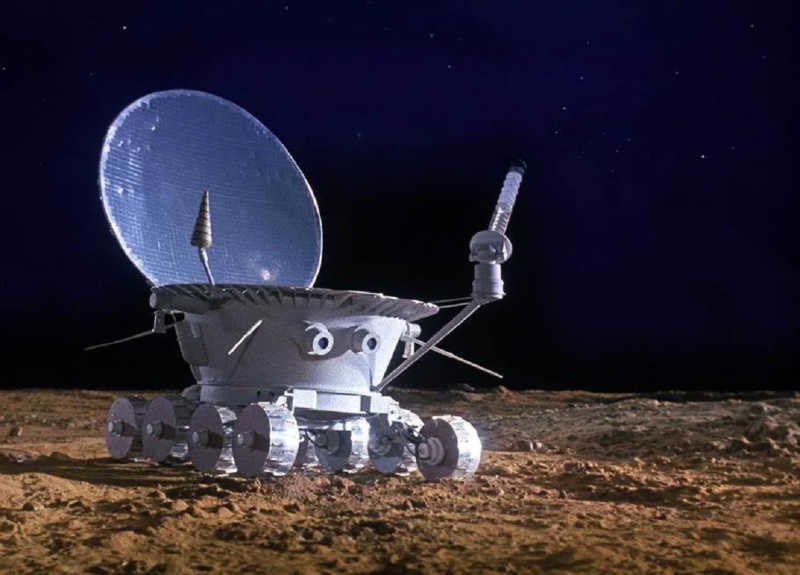
The Moon is under constant observation by lunar robotic explorers. A comprehensive map of its far side has been created, revealing that this hemisphere of our satellite is vastly different from the visible side. It is predominantly mountainous, with only a few scattered “seas”. American astronauts have made visits to the Moon, and our remotely operated lunar rovers have also provided us with valuable insights.
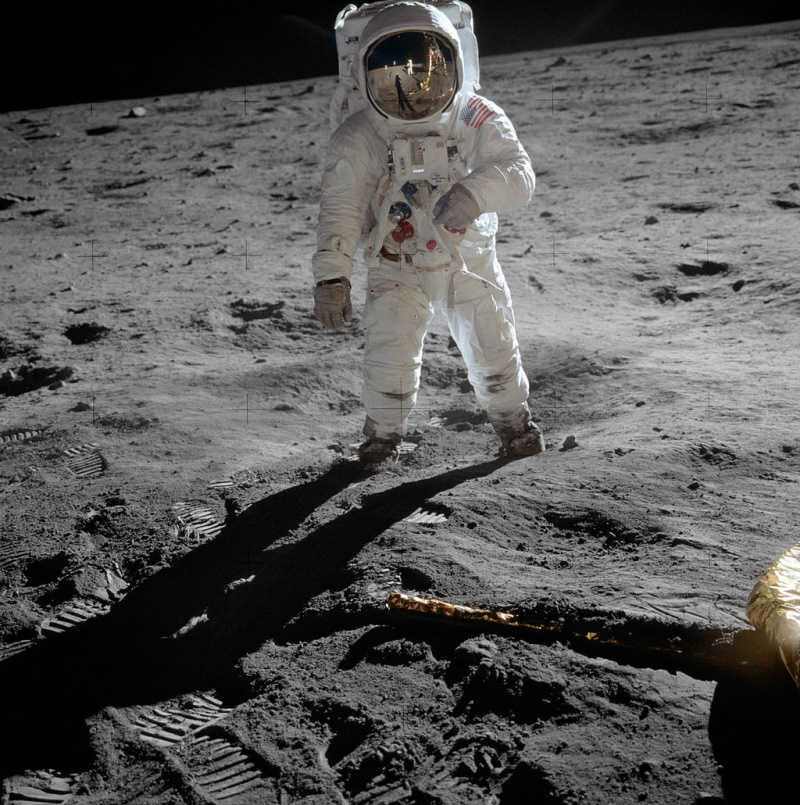
The delivery of lunar soil to Earth was carried out by automatons and astronauts. It is possible that permanent scientific stations will be established on the Moon, paving the way for the construction of the first lunar cities. Instead of launching spacecraft from Earth, they will be sent from the Moon during distant interplanetary voyages. The Moon will play a crucial role as an intermediate station for future interplanetary flights.
Fascinating Facts about the Moon
Moon’s Optical Illusion
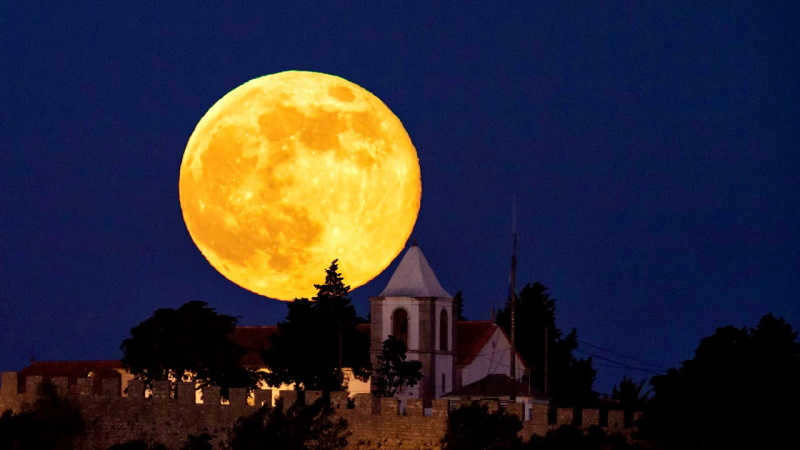
When the Moon is low above the horizon, it gives the illusion of being much larger than when it is high in the sky. However, the actual size of the Moon does not significantly change based on its height above the horizon. In fact, it slightly decreases when it is near the horizon due to the increased distance between the observer and the Moon, which is equal to the size of the Earth’s radius. Currently, there are multiple theories that attempt to explain this visual deception using different explanations.
What is the duration of a flight to the Moon?
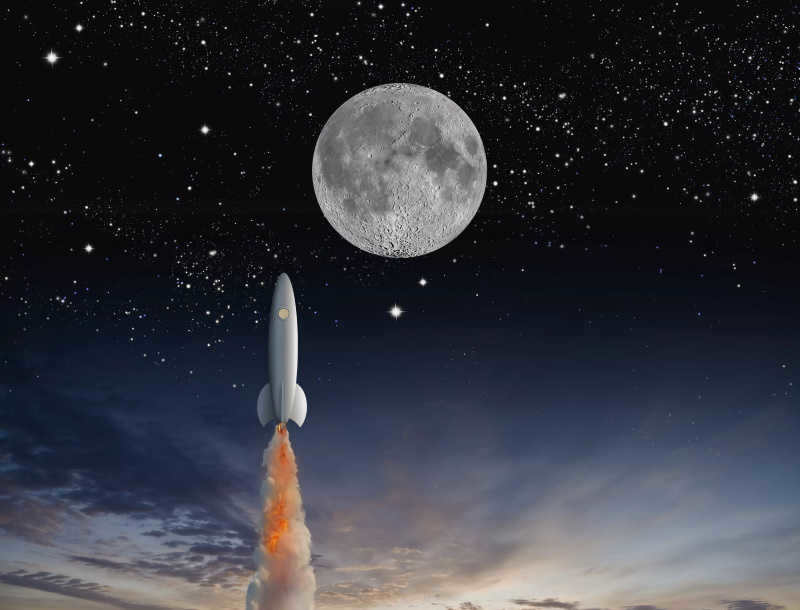
What is the distance between the Earth and the Moon? The distance between the Earth and the Moon is not fixed since the Moon is in constant motion, revolving around the Earth and moving closer and farther away. The closest point is approximately 367,047 kilometers (equivalent to over 9 Earth equators), while the farthest point is approximately 405,696 kilometers away from Earth.
Hence, the distance depends on the time of departure and the Moon’s position when the final route is reached. This determines both the duration of the journey and the distance to be covered.
The longest recorded journey from Earth to the Moon lasted over a year: ESA’s SMART-1 probe traveled for 410 days.

